


A Tactical Guide To Victory

In the heart-pounding realm where strategy meets adrenaline, the art of outwitting opponents plays a pivotal role in achieving success on the paintball field. Paintball is more than just a recreational pursuit; it's an intricate dance of cunning tactics, teamwork, and individual skill, all on a canvas of adventure. In this article, we'll delve into the techniques and strategies you can use to outsmart your opponents in the world of paintball.
The Importance Of Outwitting Opponents
Outsmarting your opponents in paintball is a fundamental skill that can turn the tide of the game in your favor. While accuracy and precision are crucial, intelligence and strategy can be equally, if not more, important. Outwitting opponents can help you secure eliminations, capture objectives, and ultimately win the game.
Key Strategies For Outsmarting Opponents In Paintball
Predicting Movements: Pay attention to your opponents' movements and patterns. By predicting where they are likely to go next, you can set up ambushes or position yourself advantageously.
Flanking Maneuvers: Outflanking your opponents is a classic tactic that can catch them off guard. By taking a wide route to the side or rear, you can create crossfire situations and disrupt their plans.
Communication: Effective communication with your team is essential for outwitting opponents. Share information about enemy positions, plans, and actions. Coordinate your efforts to maximize your advantage.
Deception: Use deception to your advantage. Mislead opponents with false information, create diversions, or employ other tactics to make them act in ways that benefit your team.
Psychological Warfare: Paintball is as much a mental game as it is physical. Use psychology to unsettle your opponents. Taunts, distractions, and mind games can create opportunities for outsmarting them.
Bait And Switch: Employ this tactic to draw opponents into a trap. Use one player as bait to divert their attention, while others set up an ambush or take advantageous positions.
Map Awareness: Familiarize yourself with the paintball field's layout. Knowing the terrain, hiding spots, and potential ambush locations can give you a significant edge in outwitting opponents.
Adaptive Play: Be flexible and adapt to the evolving situation. Outsmarting opponents often requires quick thinking and the ability to change tactics on the fly.
Observation Skills: Sharpen your observation skills to spot opponents before they spot you. Use cover effectively to remain concealed while maintaining a clear line of sight on potential targets.
Teamwork: Remember that teamwork is the cornerstone of outsmarting opponents in paintball. Working closely with your teammates, coordinating tactics, and covering each other's positions are essential for success.
Mastering The Art Of Outwitting Opponents
Outsmarting opponents in paintball is a skill that improves with practice. Engage in regular paintball matches to refine your strategies and adapt to different scenarios. Study the tactics of experienced players and learn from their successes and failures.
In the heart-pounding realm where strategy and adrenaline collide, outsmarting opponents is the key to victory. By honing your wits and working as a team, you can enjoy the thrill of paintball while consistently coming out on top. So, load your marker, employ these tactics, and aim to outwit your opponents in the colorful battle of paintball.
More Than Just A Game
 While Ultimate Frisbee is celebrated for its emphasis on sportsmanship, the competitive side of the sport should not be underestimated. As the sport has grown and matured, players have honed their skills, developed advanced strategies, and pushed the boundaries of athleticism. Competitive Ultimate showcases the sport's evolution from a casual pastime to a serious athletic endeavor.
While Ultimate Frisbee is celebrated for its emphasis on sportsmanship, the competitive side of the sport should not be underestimated. As the sport has grown and matured, players have honed their skills, developed advanced strategies, and pushed the boundaries of athleticism. Competitive Ultimate showcases the sport's evolution from a casual pastime to a serious athletic endeavor.
One of the defining features of competitive Ultimate is the level of physicality involved. Players often engage in intense sprinting, jumping, and diving to make plays or defend against their opponents. The sport's fast-paced nature demands not only speed and agility but also endurance and strength. Competitive players are in top physical condition, allowing them to perform at their best throughout a match that can last up to 90 minutes or more.
Strategic gameplay is another hallmark of competitive Ultimate. Teams employ a variety of offensive and defensive strategies to gain an edge over their opponents. Offense focuses on precise throws, timed cuts, and well-coordinated teamwork to advance the disc down the field and score points. On the defensive side, players employ zone defenses, person-to-person marking, and strategic positioning to thwart their opponents' advances.

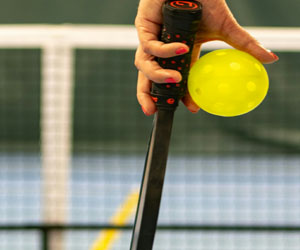


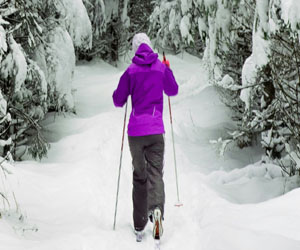

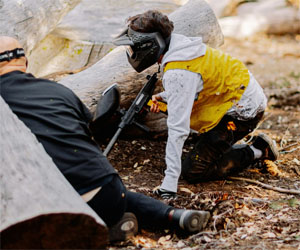

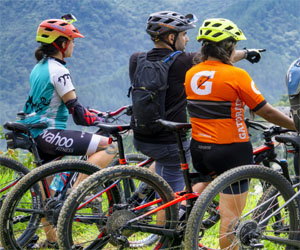 Learn The Techniques: Mountain biking involves specific techniques that are important for both safety and enjoyment. Focus on body positioning, balance, and weight distribution to maintain control on uneven terrain. Learning to navigate obstacles, handle steep descents, and manage your speed on downhills is crucial.
Learn The Techniques: Mountain biking involves specific techniques that are important for both safety and enjoyment. Focus on body positioning, balance, and weight distribution to maintain control on uneven terrain. Learning to navigate obstacles, handle steep descents, and manage your speed on downhills is crucial.
Ride With Others: Riding with experienced friends or joining a beginner's group ride can be immensely helpful. You can learn from their experience and get tips on tackling obstacles or mastering techniques. Additionally, riding with others can provide a sense of camaraderie and motivation.
Gradual Progression: Don't rush your progression. As you gain confidence and skills, you can start exploring more challenging trails. It's important to understand your limits and gradually push them while staying within your comfort zone.
Be Mindful Of The Environment: Respect the natural environment and the trails you ride on. Follow trail rules and guidelines, and avoid disturbing wildlife or damaging the terrain. Leave no trace and help maintain the beauty of the outdoors.
Stay Hydrated And Fuel Up: Mountain biking can be physically demanding, so carry water and energy snacks. Staying hydrated and nourished is essential for endurance on the trail.
A Journey Of Connection And Discovery
 Nurturing The Spirit: Nature has the remarkable ability to nurture the spirit. The act of exploring the heart of nature is an opportunity to find solace, peace, and tranquility. The sights and sounds of the wild provide a sense of rejuvenation and spiritual renewal, often needed in a world filled with noise and distractions.
Nurturing The Spirit: Nature has the remarkable ability to nurture the spirit. The act of exploring the heart of nature is an opportunity to find solace, peace, and tranquility. The sights and sounds of the wild provide a sense of rejuvenation and spiritual renewal, often needed in a world filled with noise and distractions.
A Symphony Of Senses: Nature engages all the senses. The scent of pine in the woods, the sound of a babbling brook, the feel of soft moss underfoot, the taste of fresh mountain air, and the sight of a starry night sky—each of these sensory experiences contributes to the profound connection that occurs when one explores the heart of nature.
Observing Biodiversity: One of the most fascinating aspects of exploring the heart of nature is the opportunity to witness biodiversity. From rare and exotic plant species to elusive wildlife, nature's richness is a constant source of wonder. Observing the delicate balance of ecosystems provides a newfound appreciation for the interconnectedness of all life.
Reconnecting With Simplicity: The heart of nature reminds us of the simplicity that exists in the natural world. In contrast to the complexities of modern life, nature offers a refuge of uncomplicated beauty.
Embracing Elegance On The Slopes
 3. Mindful Breathing And Relaxation: The connection between body and breath is vital for grace on the slopes. Relaxation and controlled breathing help maintain composure. Focus on deep, intentional breaths to stay calm and centered. Relaxed muscles translate to better balance and improved riding.
3. Mindful Breathing And Relaxation: The connection between body and breath is vital for grace on the slopes. Relaxation and controlled breathing help maintain composure. Focus on deep, intentional breaths to stay calm and centered. Relaxed muscles translate to better balance and improved riding.
4. Choose The Right Terrain: Graceful skiing and snowboarding can be better expressed on certain terrains. Gentle, well-groomed slopes are ideal for practicing elegance. These areas allow you to perfect your form and experiment with your style. As you gain confidence, you can venture into more challenging terrain while still maintaining your grace.
5. Dress For Elegance: Your attire can contribute to your sense of grace. Opt for stylish, well-fitted ski or snowboard gear that not only keeps you warm and protected but also exudes a sense of refinement. Embrace colors and patterns that resonate with your personal style.
6. Develop Your Personal Style: Elegance in snow sports is also about finding your personal style and flair.
Fitness Improvement For Beginners
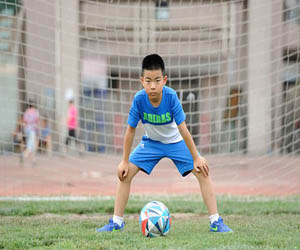 2. Start Slowly: One of the most common mistakes beginners make is starting too aggressively. It's crucial to ease into your fitness routine to avoid burnout and injury. Begin with activities you enjoy and are comfortable with, even if they are less intense. You can gradually increase the intensity as your fitness level improves.
2. Start Slowly: One of the most common mistakes beginners make is starting too aggressively. It's crucial to ease into your fitness routine to avoid burnout and injury. Begin with activities you enjoy and are comfortable with, even if they are less intense. You can gradually increase the intensity as your fitness level improves.
3. Create A Structured Plan: Having a structured fitness plan can help you stay on track. This plan should include the type of exercise, the frequency, and the duration of each session. It can also be helpful to have a specific time set aside for your workouts.
4. Consistency Is Key: Consistency is the bedrock of fitness improvement. Make a commitment to sticking to your plan, even when motivation wanes. Establishing a routine and making exercise a non-negotiable part of your day will help you stay on course.
5. Embrace Variety: Variety in your workouts can keep things interesting and prevent boredom. Mix different forms of exercise, such as cardio, strength training, flexibility exercises, and even outdoor activities. Variety can also help prevent overuse injuries and promote overall fitness.
6. Listen To Your Body: Paying attention to your body is essential. If you experience pain, dizziness, or extreme discomfort during your workouts, stop immediately. Ignoring these signals can lead to injuries.
7. Proper Nutrition: A well-balanced diet is an integral part of any fitness improvement plan. Ensure you're getting the necessary nutrients to fuel your body for exercise and support recovery. Consult with a nutritionist or dietitian if needed.
8. Stay Hydrated: Proper hydration is critical for overall health and fitness. Drink enough water before, during, and after your workouts to stay properly hydrated.
9. Get Adequate Rest: Rest and recovery are just as important as exercise. Allow your body time to recuperate by getting enough sleep, as it is when your body repairs and grows stronger.